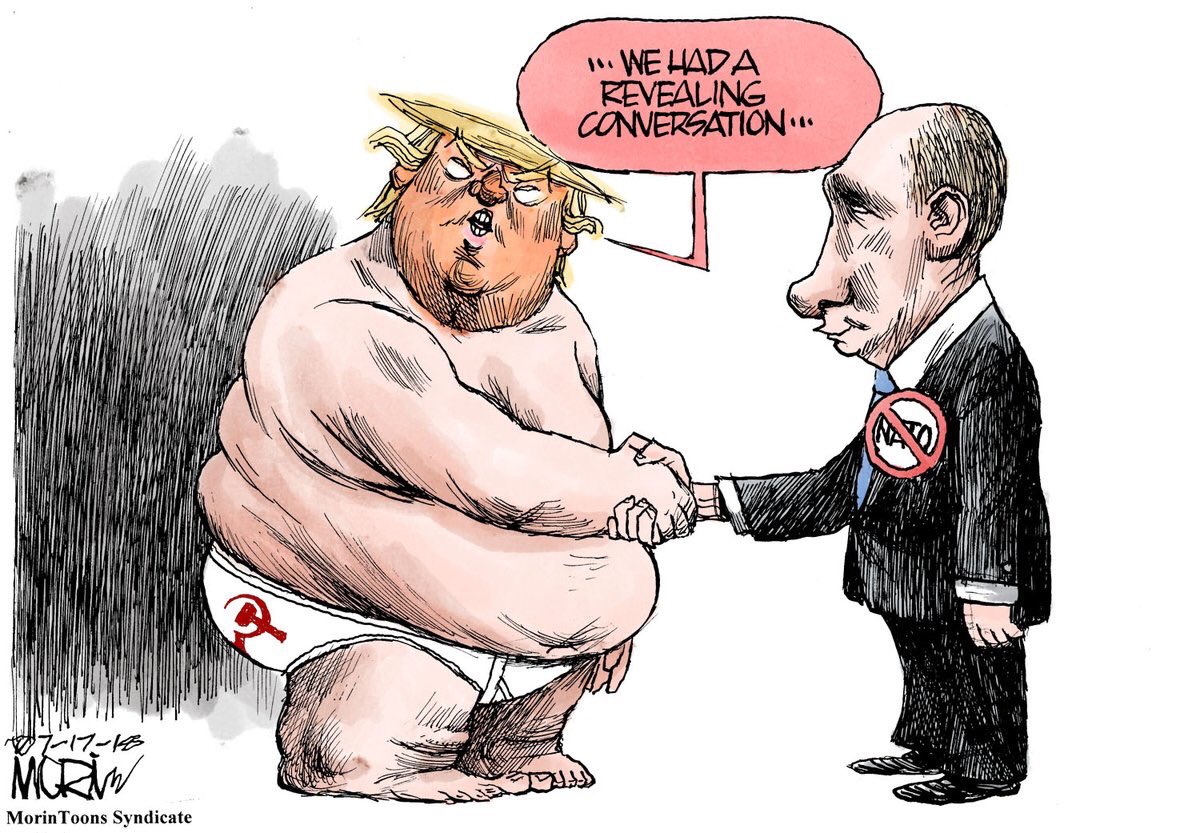Donald Trump’s affinity for Russia has been well-documented—because nothing says “tough on Moscow” like a president who fawns over Putin at every opportunity. But his specific geopolitical obsessions—such as his laughable interest in acquiring Greenland and his meddling in Panama—suggest something even more intriguing: a foreign policy crafted not so much for America’s benefit, but as a love letter to the Kremlin. While much of the public discourse has focused on election interference and shady business dealings, a closer look at these territories reveals a larger game at play—one where Trump’s actions just so happen to align perfectly with Russia’s grand ambitions. But hey, just another lucky coincidence, right? Oh, and let’s not forget Ukraine—because what good is a Kremlin playbook without a subplot involving a country Putin desperately wants to control?
Greenland: A Gateway to Arctic Dominance
Remember when Trump woke up one day and decided that buying Greenland was the ultimate power move? Denmark sure does. While most people dismissed it as just another episode of “The Art of the Deal: Arctic Edition,” the reality is that Russia has been eyeing the Arctic for years. With melting ice opening up new shipping lanes and access to untapped resources, Moscow has been eager to establish dominance in the region. If Greenland were to somehow fall under U.S. control—but with a leadership willing to cut deals that just so happened to benefit Russia—it could make Arctic negotiations a whole lot easier for Putin. And wouldn’t you know it, Trump just happened to be the only president in modern history obsessed with buying a massive ice-covered island that plays right into Russia’s Arctic strategy. What are the odds?
Panama: Breaking the Bottleneck for Russia
While Greenland is about Arctic access, Panama is all about controlling maritime trade. Russia has long wanted a bigger slice of the global shipping game, but Panama’s pesky restrictions on foreign investment (especially when it comes to adversarial nations) have been a real buzzkill for Moscow’s expansion plans. Enter Trump, a man with an uncanny ability to turn international diplomacy into a personal business venture.
Trump’s strong-arming of Panamanian officials, particularly in the scandal surrounding the Trump Ocean Club in Panama City, conveniently aligned with Russia’s broader goal of loosening restrictions that limit its economic influence. If Panama were to allow more Russian investments or grant greater access to Moscow-affiliated shipping firms, Russia could exert indirect control over one of the world’s most critical trade routes. And what better way to make that happen than by having a U.S. president who treats international relations like a Monopoly board?
Ukraine: The Unfinished Business
Now, speaking of Trump’s alignment with Russian interests, let’s take a moment to appreciate his near-religious devotion to doing Putin’s bidding in Ukraine. From his infamous “perfect call” with President Zelenskyy—where he tried to extort a political favor—to his repeated insistence that Crimea rightfully belongs to Russia, Trump seemed more interested in pleasing Moscow than standing up for a democratic ally. And when Russia finally invaded Ukraine in 2022, Trump’s response was, shall we say, less than Churchillian. Instead of condemning the invasion, he called it “genius” and “savvy.” Yes, because nothing says “America First” like cheering on a foreign adversary’s land grab.
And let’s not forget the cherry on top: his constant threats to pull the U.S. out of NATO, which would be the ultimate gift to Putin. After all, why bother with expensive wars when you can just convince the American president to undermine Western alliances for you?
A Pattern of Alignment
The through-line between Trump’s interests in Greenland, Panama, and Ukraine isn’t some wild conspiracy theory—it’s a pattern as obvious as a spray-tanned comb-over. Whether driven by financial entanglements, ideological sympathy, or just good old-fashioned admiration for authoritarian strongmen, Trump’s foreign policy repeatedly handed Russia strategic advantages while claiming to put “America First.” While many of his actions were framed as tough, nationalist maneuvers, their practical effects tell a different story—one where Moscow kept winning and U.S. allies kept losing.
In retrospect, Trump’s attempts to purchase Greenland, his interventions in Panama, and his unwavering commitment to undermining Ukraine all fit into a larger picture: a U.S. president whose foreign policy wasn’t just chaotic or misguided, but one that read like a checklist of Kremlin priorities. America First? More like Russia First, but with better branding.
